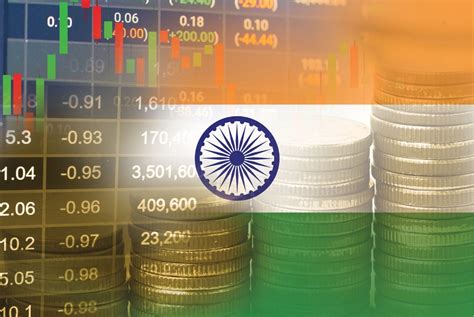India’s financial landscape has always been shaped by a cautious approach toward speculative markets, particularly when it involves foreign currencies. Forex trading, a global financial activity that involves buying and selling currency pairs like the US Dollar, Euro, or Japanese Yen, has gained massive popularity worldwide. However, within India’s borders, strict regulations and prohibitions make this form of trading inaccessible to most individuals. The reasons behind this stance are deeply rooted in the country’s legal, economic, and financial stability priorities. Understanding why forex trading faces restrictions in India requires exploring how these factors interconnect and influence the broader economic environment.
Legal Framework Governing Forex Trading in India
India’s approach to forex trading stems from its focus on financial stability and regulated economic growth. Forex trading regulations are tightly enforced, ensuring control over currency exchange and speculative activities.

Role of the Reserve Bank of India (RBI) in Forex Regulation
The Reserve Bank of India (RBI) serves as the central authority governing all foreign exchange transactions in the country. Its objective is not only to regulate the flow of foreign currency but also to safeguard against market volatility and financial malpractice.
Key responsibilities of the RBI include:
Granting authorization to financial institutions and banks for dealing in foreign exchange.
Monitoring capital inflows and outflows to protect the Indian Rupee’s value.
Implementing policies to mitigate the impact of speculative forex activities, especially involving currencies like the US Dollar, Euro, and Japanese Yen.
Issuing guidelines to prevent unregulated forex brokers from exploiting loopholes through unauthorized buy-sell operations.
This regulatory approach helps control inflation rates, stabilize the trade balance, and ensure the economy does not face undue pressure from global currency speculation.
Foreign Exchange Management Act (FEMA) and Its Restrictions
The Foreign Exchange Management Act (FEMA) of 1999 provides the legal basis for forex regulation in India. It defines permissible foreign exchange transactions and sets limitations to protect the country's economic interests.
Key restrictions under FEMA:
Prohibition on residents engaging in forex trading involving non-INR currency pairs outside authorized platforms.
Restriction on sending money abroad for speculative investments in forex trading platforms not approved by the RBI.
Stringent penalties for violation, including monetary fines and imprisonment.
Regulation of trade balance through controlled currency inflow and outflow, impacting key economic indicators like GDP and foreign exchange reserves.
FEMA essentially ensures that foreign currency usage aligns with India’s macroeconomic objectives and prevents unmonitored capital flight.
Authorized Dealers vs. Unregulated Brokers: Key Differences
Understanding the distinction between authorized dealers and unregulated brokers is crucial to grasp India’s strict stance on forex trading.
| Category | Authorized Dealers | Unregulated Brokers |
|---|---|---|
| Regulatory Authority | Licensed and monitored by the Reserve Bank of India | Operate outside RBI’s regulatory framework |
| Permitted Currency Pairs | INR-based pairs (e.g., USD/INR, EUR/INR, JPY/INR) | Offer speculative pairs (e.g., USD/JPY, GBP/USD) |
| Trading Platforms | RBI-approved electronic platforms | Offshore digital platforms without Indian licenses |
| Investor Protection | Strict adherence to compliance, KYC norms | High risk of fraud, no formal protection mechanisms |
| Leverage Restrictions | Controlled leverage to limit losses | Excessive leverage, increasing risk of capital wipeout |
This clear-cut difference emphasizes why the government allows only authorized dealers while prohibiting the use of foreign brokers.
Why INR-Based Currency Pairs Are Allowed but Others Are Not
The focus on INR-based currency pairs directly ties to India's efforts to preserve its financial sovereignty.
Several factors justify this selective permission:
Control Over Domestic Currency Volatility: Trading INR against global currencies like the US Dollar or British Pound allows RBI to monitor and intervene during volatile periods.
Alignment with Trade Balance Objectives: Encouraging INR-based transactions supports India's exports and imports without exposing the economy to unnecessary speculation.
Prevention of Arbitrage Opportunities: Limiting access to foreign pairs curbs arbitrage practices that could destabilize the financial ecosystem.
Compliance with International Regulations: Aligning local practices with global financial reporting standards ensures transparency.
This approach reduces risks from high-frequency trades involving volatile, non-INR currency pairs and keeps speculative activities within regulated channels.
Economic Factors Behind India’s Forex Trading Ban
India’s macroeconomic priorities heavily influence its decision to ban forex trading for retail investors. Forex trading activities, left unchecked, can impact key indicators like trade balance, GDP, and inflation control.

Impact of Forex Trading on India’s Trade Balance
Unregulated forex trading increases foreign currency demand, impacting the trade balance negatively.
Excessive speculation in currencies like the US Dollar or Euro can cause artificial demand spikes.
Arbitrage strategies by traders exploit cross-border price differences, disturbing official trade figures.
Heavy capital outflow through forex speculation weakens India’s current account position.
By restricting retail forex trading, authorities aim to maintain a balanced flow of exports and imports, aligning trade performance with national goals.
Role of Foreign Exchange Reserves in Economic Stability
Foreign exchange reserves are vital for cushioning the economy during volatile periods. Speculative forex trading creates unpredictable demand for foreign currencies like the British Pound, Japanese Yen, or Canadian Dollar, pressuring reserve levels.
| Key Factor | Impact on Forex Reserves |
|---|---|
| Speculative Trading Volume | Rapid depletion due to excessive buy-sell transactions |
| Market Condition Volatility | Increased reserve usage to stabilize currency fluctuations |
| Illegal Broker Channels | Reserve leakage outside official frameworks |
| Uncontrolled Capital Flow | Weakens RBI's ability to hedge INR positions |
Sustaining a healthy reserve level ensures India can manage trade deficits, Interest Rate adjustments, and external shocks.
Inflation Rate Control through Forex Regulations
India’s inflation rate is sensitive to the value of the Indian Rupee. Unchecked forex trading amplifies INR volatility, influencing import prices, especially for commodities pegged to the US Dollar. As imported goods become costlier, the Consumer Confidence index may decline. To prevent this inflationary cycle, regulators control forex inflow and outflow.
Capital Outflow Risks from Unrestricted Forex Trading
Forex trading often facilitates large-scale capital movement without contributing to real economic growth:
Funds moved to offshore forex platforms bypass RBI's monitoring systems.
High-frequency trading in non-INR currency pairs accelerates capital flight.
Illegal outward remittances for forex speculation affect India’s financial account.
Excessive hedging in volatile time frames like Hourly or 5-minute charts magnifies losses.
These outflows can destabilize the country’s financial stability if not tightly controlled.
Indian Rupee Volatility and National Financial Security
The Indian Rupee's value is critical to India's economic strength. Frequent speculative forex activities involving shorting or long positions on the INR against stronger currencies, such as the US Dollar or Chinese Yuan, pose threats to:
National trade competitiveness.
Imported commodity pricing.
Interest Rate policy effectiveness.
High volatility undermines consumer confidence, leading to unstable economic growth trajectories.
Effect on India’s GDP Due to Illegal Forex Channels
The spread of unauthorized forex channels has indirect consequences on India’s GDP:
Illegal forex trading platforms divert household savings and corporate capital from productive sectors like manufacturing and services. Instead of supporting employment or output, these funds circulate in speculative cycles.
This redirection limits GDP growth by:
Curtailing investments in infrastructure.
Increasing dependency on foreign capital.
Amplifying financial system risks during bearish global market phases.
Authorities restrict these channels to preserve economic output stability and long-term development.
Risks Associated with Forex Trading for Retail Investors
Forex trading poses several hidden dangers for retail investors, especially in emerging markets like India. Factors such as high leverage, unpredictable market conditions, and unregulated brokers increase financial vulnerability.
Leverage Risks: How High Leverage Can Wipe Out Capital
Retail traders are often attracted by the promise of large returns through high leverage in forex trading. However, high leverage amplifies both profits and losses:
Leverage magnifies even small market fluctuations in currency pairs like USD/INR or EUR/INR.
Losses can exceed initial capital, especially during volatile conditions involving the Japanese Yen or British Pound.
Stop Loss Orders may trigger prematurely due to aggressive price swings, wiping out equity rapidly.
Retail traders often overestimate their risk management skills, ignoring technical indicators such as RSI or Bollinger Bands.
This risk is one reason regulators discourage forex trading in India to protect investors from catastrophic losses.
The Danger of Market Volatility for Inexperienced Traders
Volatility in the forex market can be both an opportunity and a pitfall. For inexperienced traders, it is often the latter. Consider a scenario:
A trader decides to buy the Australian Dollar against the US Dollar during a seemingly bullish trend. Unexpected economic indicators like a drop in Australia’s Consumer Confidence or a surprise Interest Rate decision cause a reversal. Without effective hedging strategies or familiarity with technical tools like Fibonacci retracements, the trader faces significant losses.
Frequent market shifts in shorter time frames such as Hourly or 15-minute charts demand expertise, something many retail investors lack. This unpredictability exposes them to rapid capital depletion, making strict regulations in India vital.
Fraudulent Practices by Unauthorized Forex Brokers
Unauthorized forex brokers exploit retail traders by offering unrealistic promises. These brokers operate without oversight, posing significant financial threats.
The following table outlines key risks:
| Broker Practice | Impact on Retail Investor |
|---|---|
| Offering excessive leverage without risk warnings | Increased likelihood of margin calls and account wipeout |
| Manipulation of bid-ask spreads | Hidden costs during buy and sell orders |
| Lack of regulatory protection | No guarantee of fund safety or grievance redressal |
| False advertising of bullish or trending markets | Encouraging traders to speculate blindly |
| Absence of transparent trading platforms | High potential for fraud, withdrawal issues |
These fraudulent practices justify why India enforces strict forex trading bans to shield individual investors from exploitation.
Comparison with Forex Trading Regulations Globally
Regulatory approaches to forex trading differ significantly across countries, shaped by distinct economic priorities and financial safeguards. Forex trading rules globally highlight how each market balances investor freedom with protection.

Forex Trading Rules in the US: CFTC & NFA Overview
The United States enforces some of the world’s strictest forex trading rules through the Commodity Futures Trading Commission (CFTC) and the National Futures Association (NFA).
Brokers must be registered with the CFTC and adhere to high capital requirements.
Maximum leverage is capped at 50:1 for major currency pairs like the US Dollar, Euro, and British Pound.
Client funds must be held in segregated accounts, ensuring financial security.
The NFA mandates transparency, requiring brokers to disclose market condition risks, including volatile and range-bound trading periods.
Unauthorized forex brokers operating outside these regulations face legal action and penalties.
This regulatory environment prioritizes risk control and retail investor protection while maintaining market integrity.
How Japan Regulates Forex Trading: Focus on Retail Investor Protection
Japan’s approach to forex trading places a strong emphasis on shielding retail investors.
A hypothetical scenario helps illustrate:
A retail trader in Tokyo plans to short the Australian Dollar against the Japanese Yen. Japanese regulations, enforced by the Financial Services Agency (FSA), limit leverage to 25:1, reducing the likelihood of extreme capital losses. Strict Know Your Customer (KYC) procedures, combined with guidelines for stop loss orders, ensure the trader remains within a secure trading environment, even during volatile market phases.
These rules balance accessibility with risk management, contrasting India's ban by fostering a controlled yet open forex market.
European Union's MiFID Guidelines for Forex Brokers
The Markets in Financial Instruments Directive (MiFID) governs forex trading across the European Union.
A table of key regulatory measures:
| Regulatory Measure | Impact on Forex Trading |
|---|---|
| Standardized leverage limits | Retail traders limited to 30:1 on major currency pairs |
| Negative balance protection | Prevents losses exceeding account balance |
| Transparency requirements | Brokers must disclose fees, spreads, and order execution |
| Investor compensation schemes | Protects funds up to a defined threshold |
| Supervision by ESMA | Ensures consistent compliance across EU member countries |
MiFID’s framework emphasizes investor protection while allowing forex trading, striking a contrast to India’s more restrictive approach.
Australia’s Approach to Forex Trading under ASIC
Australia's forex trading environment is regulated by the Australian Securities and Investments Commission (ASIC). Several distinctive elements define its approach:
Leverage limits set to a maximum of 30:1 for major pairs like USD/JPY, GBP/USD.
Mandatory client fund segregation to prevent misuse.
Strict oversight of trading platforms to ensure fair execution.
Disclosure obligations about potential market condition risks and the use of technical indicators like MACD or RSI.
Prohibition of offering high-risk forex products to inexperienced investors without clear warnings.
ASIC’s focus is on balancing competitive market access with stringent financial safeguards.
Key Differences Between Indian and Global Forex Trading Policies
While global markets regulate forex trading with protective measures, India enforces an outright ban on most forms of retail forex trading involving non-INR currency pairs.
The contrast lies in:
Investor Autonomy: Countries like the US, Japan, and Australia allow individuals to trade freely under regulated environments, whereas India restricts participation entirely.
Leverage Policies: Global regulators prefer leverage limits (25:1 to 50:1) to control exposure; India eliminates the risk by disallowing access.
Compliance Frameworks: International markets use regulatory bodies (CFTC, FSA, ESMA, ASIC) to maintain transparent, supervised trading platforms, while India limits forex activities to authorized dealers only, avoiding offshore broker complications.
India’s cautious stance stems from prioritizing economic stability and capital control, contrasting the globally accepted model of regulated freedom.
Technological & Market Dynamics in Forex Trading
Technology has reshaped forex trading, making it more accessible but also riskier. Key tools like trading platforms, algorithms, technical indicators, and timeframes influence trader behavior and regulatory responses globally.
Role of Trading Platforms in Forex Accessibility
Trading platforms bridge retail traders to global forex markets. They simplify complex trading actions like buy, sell, hedge, or arbitrage while offering real-time data across various currency pairs—ranging from the US Dollar to the Swedish Krona.
Key aspects influencing forex accessibility:
User-Friendly Interfaces: Platforms like MetaTrader streamline access to major pairs like EUR/USD or GBP/USD.
Low Entry Barriers: Small minimum deposit requirements allow traders to enter volatile or trending markets with ease.
Wide Range of Order Types: Availability of Market Orders, Limit Orders, Stop Loss Orders, and Take Profit Orders enhances flexibility.
Cross-Device Access: Traders can operate across Daily, Hourly, or 5-minute time frames using smartphones or desktops.
Integration with Indicators: Built-in tools like MACD, RSI, and Bollinger Bands support decision-making, making complex strategies approachable even for beginners.
However, such accessibility opens doors to unauthorized brokers, bypassing regulatory oversight, which is one reason for India’s prohibition stance.
Algorithmic Trading and its Unchecked Spread in Illegal Forex Channels
Algorithmic trading uses automated systems to execute rapid buy and sell decisions across multiple currency pairs. These systems thrive on volatile conditions, capitalizing on small fluctuations in currencies like the Japanese Yen or Canadian Dollar.
Unregulated brokers exploit algorithmic systems for illegal forex operations.
A detailed table reveals how:
| Feature of Algorithmic Trading | Risk in Illegal Forex Channels |
|---|---|
| High-frequency trade execution | Amplifies volatility, destabilizing INR-based currency pairs |
| Lack of human oversight | Opens avenues for market manipulation |
| Access to offshore liquidity pools | Leads to unmonitored capital flow |
| Opaque trading strategies | Decreases transparency, increasing investor risk |
Unchecked algorithmic activity often fuels rapid capital outflows and speculative bubbles, prompting Indian regulators to enforce strict bans.
Impact of Time Frames (Daily, Hourly, 5-minute) on Forex Market Behavior
Forex market behavior shifts significantly across different timeframes.
Consider the following scenario:
A retail trader using a 5-minute chart might observe rapid fluctuations in the Australian Dollar or New Zealand Dollar, responding to sudden interest rate announcements or trade balance data. Short-term traders often engage in quick buy-sell cycles, speculating on micro-movements influenced by RSI or Stochastic Oscillator signals.
Conversely, traders analyzing Daily or Weekly charts base decisions on broader economic indicators like GDP or Unemployment Rate, often aligning with long-term bullish or bearish trends.
Shorter time frames increase exposure to volatility, a risk factor regulators in India mitigate through outright bans.
How Technical Indicators Like RSI & Bollinger Bands Influence Forex Trading Strategies
Technical indicators form the backbone of many forex trading strategies. Commonly used tools include:
Relative Strength Index (RSI): Identifies overbought or oversold market conditions across currency pairs like USD/JPY or GBP/USD.
Bollinger Bands: Help traders gauge market volatility and set buy-sell triggers in sideways or trending markets.
Moving Averages: Smooth out price data for better trend identification.
MACD & Ichimoku Cloud: Used for spotting potential market reversals.
Traders often rely on these tools in volatile sessions involving the Chinese Yuan or Swiss Franc. However, misuse by inexperienced traders on unregulated platforms leads to frequent capital losses, reinforcing the Indian government's cautious stance.
The Future of Forex Trading in India
India’s forex trading landscape may undergo significant transformation as regulators, technology, and global forces influence policy changes. Exploring these developments reveals potential pathways for controlled forex market evolution.

RBI’s Potential Plans to Expand INR-Based Forex Pairs
The Reserve Bank of India (RBI) is consistently focused on promoting INR-based currency pairs while safeguarding economic stability.
Key possibilities:
Expansion to additional pairs involving currencies like the Canadian Dollar, Swiss Franc, or Chinese Yuan.
Facilitating trade settlement in INR for exports and imports, reducing dependency on the US Dollar.
Promoting hedging instruments such as Forward Contracts and Limit Orders to manage forex exposure.
Integration of INR pairs on regulated electronic platforms to boost transparency.
By broadening INR-focused forex activities, the RBI aims to balance global trade competitiveness with financial control.
Possibility of Regulated Forex Exchanges in India
India could potentially establish regulated forex exchanges under stringent guidelines.
Consider the following scenario:
A regulated exchange offering INR pairs like USD/INR, EUR/INR, or GBP/INR ensures traders’ buy-sell actions are monitored. Compliance with FEMA norms, transparent order books, and mandatory risk disclosures prevent misuse. Moreover, including oversight on leverage limits and Trailing Stop Orders further protects retail traders from volatile price swings, especially during trending market conditions.
This model bridges investor participation with systemic safeguards.
Technological Innovations and Blockchain’s Role in Forex Compliance
Blockchain technology introduces a new layer of transparency to forex transactions.
A table illustrating its application:
| Blockchain Application | Compliance Benefit |
|---|---|
| Smart Contracts | Automate and enforce compliance in forex transactions |
| Real-time Transaction Recording | Prevents manipulation by recording buy, sell, and hedge actions |
| Decentralized Ledger | Enhances traceability across currencies like Euro, Yen, Dollar |
| Regulatory Access Nodes | Allows RBI to monitor offshore forex trading in real-time |
Implementing blockchain in forex could enhance oversight while supporting innovation.
Education & Awareness Campaigns to Prevent Forex Frauds
To prevent fraudulent forex schemes, educational initiatives can empower retail investors:
Workshops highlighting risks of unauthorized forex brokers and volatile currency pairs.
Training modules on trading tools like Moving Average, MACD, and RSI for better risk management.
Simulated trading environments to teach order types: Market Orders, Stop Loss Orders, and Take Profit Orders.
Awareness drives about FEMA restrictions and how they protect investors from financial scams.
Educated traders are less likely to fall prey to unregulated platforms, aligning with India’s financial security goals.
Global Pressure and Economic Reforms That Could Influence India’s Forex Policy
Global economic dynamics and reform pressures may prompt India to reconsider its restrictive forex policies.
Several factors contribute:
Increased trade partnerships demanding liberalized forex access, particularly in currencies like the Japanese Yen or British Pound.
Global financial institutions advocating regulatory convergence with countries following MiFID, CFTC, or ASIC guidelines.
Rising demand for capital account convertibility as India’s GDP and trade balance strengthen.
Integration of advanced market surveillance technologies facilitating safer trading environments.
Such reforms may gradually shift India towards a more regulated, yet open forex trading framework while preserving macroeconomic stability.
Conclusion
India’s regulatory stance on forex trading is shaped by a complex blend of economic prudence, legal control, and investor protection. While the forex trading market operates freely across many global economies, India has chosen a path that safeguards the integrity of its currency and financial systems. The restrictions are not arbitrary; they reflect a strategic effort to control capital flow, curb inflation risks, and shield retail investors from high-leverage exposure and fraudulent brokers. As global financial dynamics evolve, shifts in technology, regulatory practices, and investor education may eventually open the door to more regulated forms of forex trading in India. However, for now, these limitations underline the importance placed on economic stability and controlled financial participation.
Forex trading is banned in India primarily to protect the Indian Rupee from excessive volatility, prevent unauthorized capital outflows, and shield retail investors from risky speculative practices. The Reserve Bank of India regulates the market tightly to ensure economic stability.
Only currency pairs that involve the Indian Rupee (INR) are allowed, such as:
These pairs are traded through authorized exchanges under strict regulation.
USD/INR
EUR/INR
GBP/INR
JPY/INR
No, Indian residents are not legally allowed to trade forex with unregulated or international brokers offering pairs beyond INR-based currencies. Doing so violates FEMA regulations and may attract penalties.
The Reserve Bank of India ensures:
Only authorized dealers can offer forex services
INR-based currency pairs are traded via recognized exchanges
Compliance with the Foreign Exchange Management Act (FEMA)
High leverage amplifies both gains and losses. For inexperienced traders, it often results in:
Quick depletion of capital
Exposure to market volatility without adequate risk management
Greater likelihood of margin calls and forced liquidation
Market volatility increases unpredictability, especially in currencies like the Japanese Yen or British Pound. Traders face rapid price swings, making it challenging to apply consistent strategies without significant risk.
Technical indicators help traders analyze price movements. Common tools include:
Moving Average: Tracks average price trends
RSI: Identifies overbought or oversold conditions
MACD: Signals momentum shifts
Bollinger Bands: Measures volatility and potential price reversals
Economic indicators directly impact currency values. Key metrics traders watch include:
They provide insights into a country’s economic health and influence market sentiment.
Interest Rate decisions
Inflation Rate data
GDP growth figures
Trade Balance reports
Possibly. Factors that could influence a change include:
For now, India prioritizes control and caution over liberalization.
Strengthening of regulatory frameworks
Technological advancements in compliance monitoring
Increased financial literacy among retail investors
Economic reforms aligning India with global forex markets







